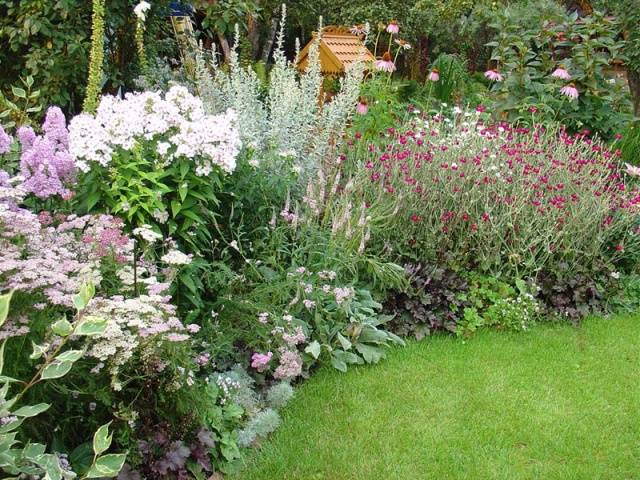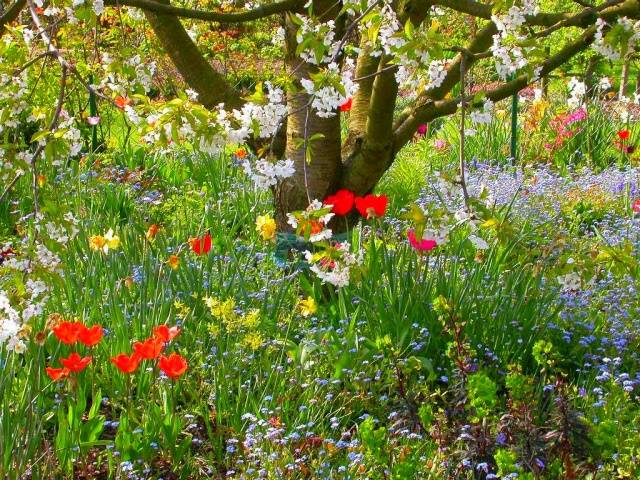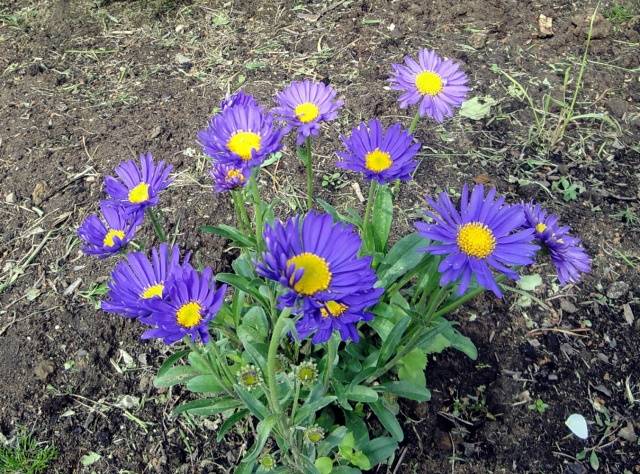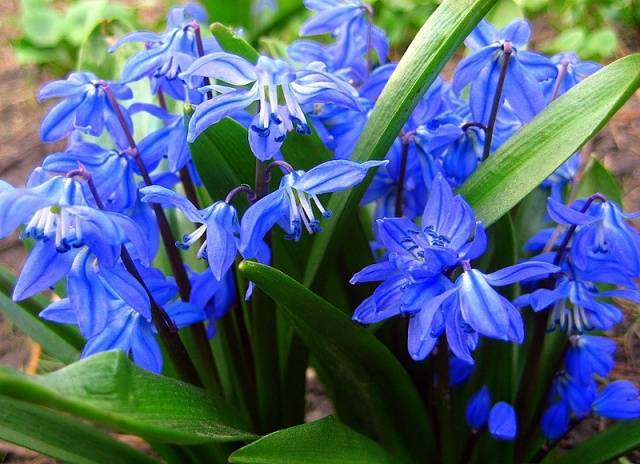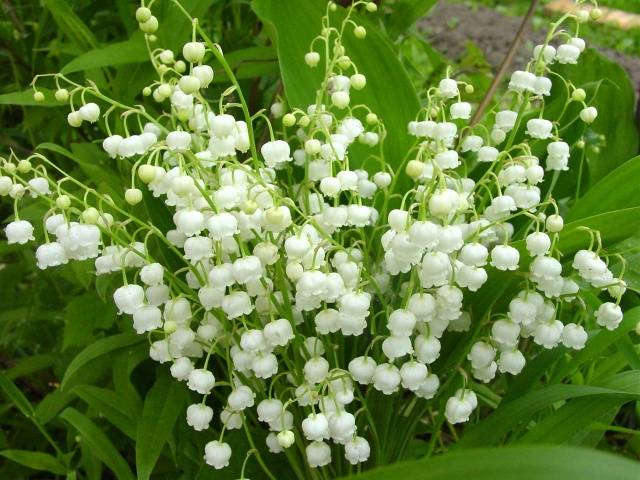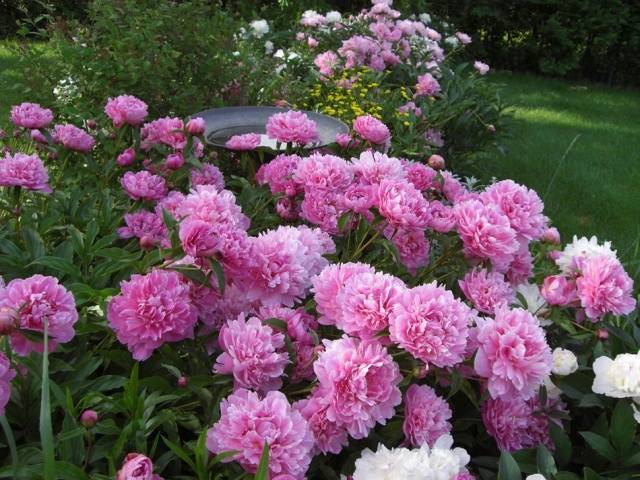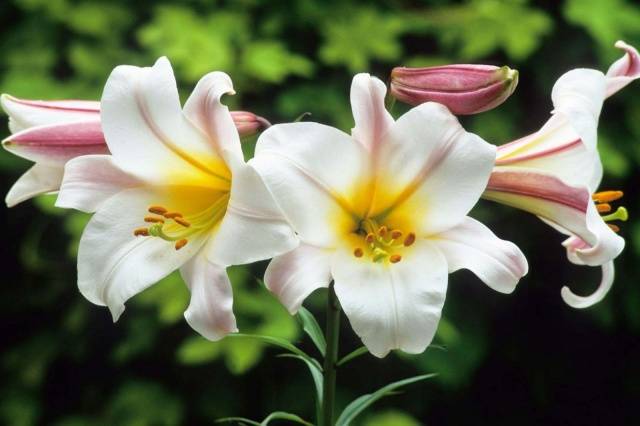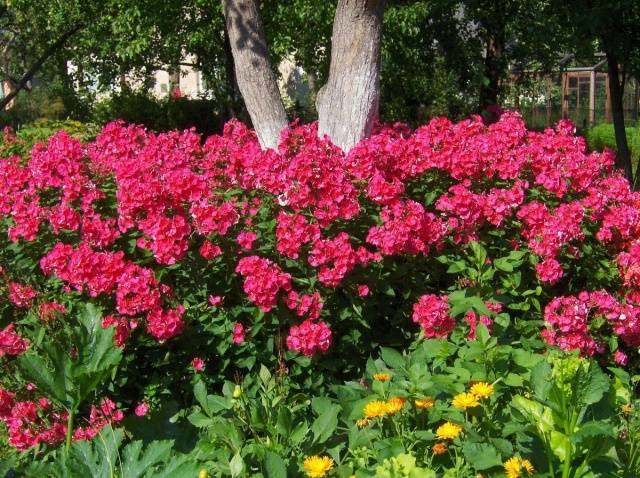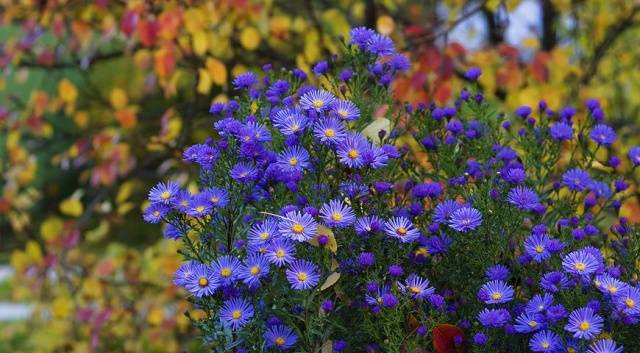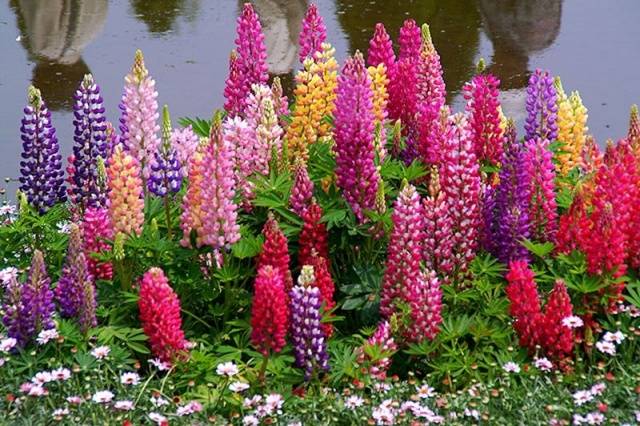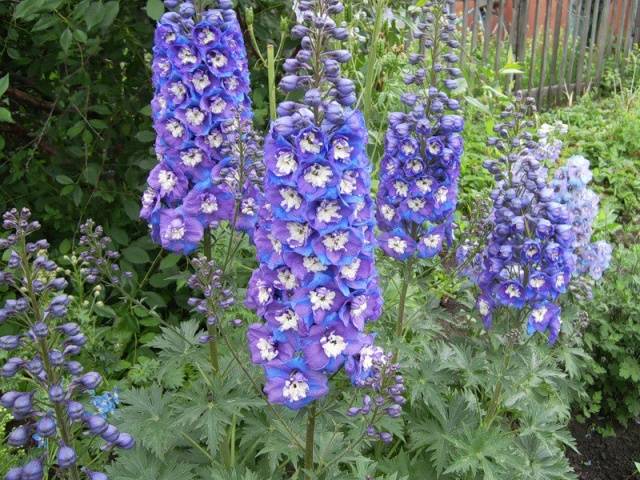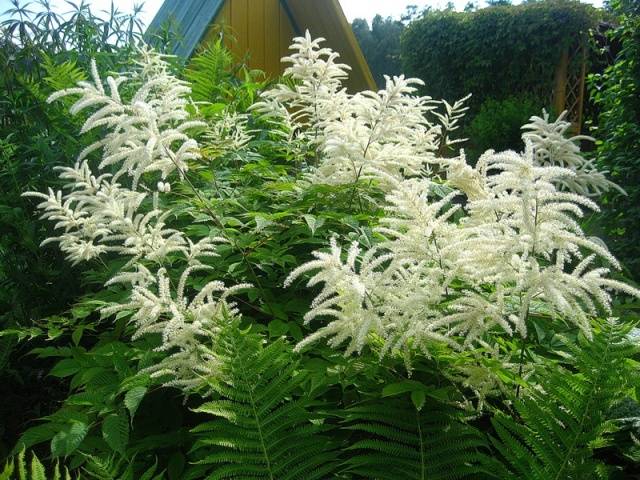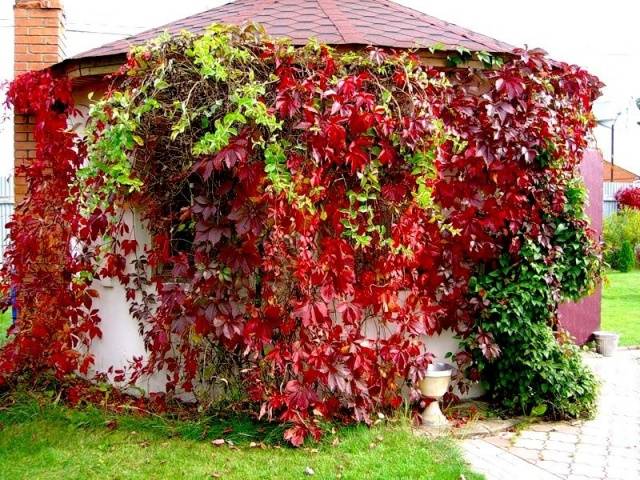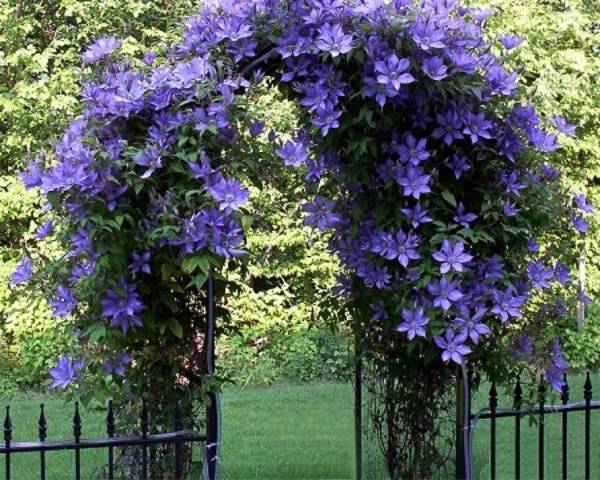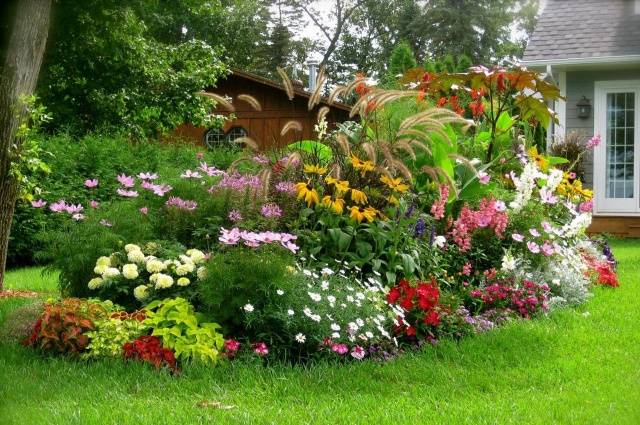Perennials - Plants for decorating your garden that have been growing for more than two years, bloom beautifully or have decorative foliage. The value of perennials is that they grow without requiring close attention for several years in one place; they are very diverse in appearance, height, and growing conditions. Therefore, gardeners have endless possibilities for using the decorative properties of perennials.
Perennial ornamental plants are valued by flower growers because they bloom beautifully and abundantly, grow well, covering all available space, leaving no chance weeds... By picking up perennials for givingblooming at different times, you can create a flower bed that will delight its owners with flowering from early spring to frost. Non-flowering perennials have a varied texture and color of leaves, which makes them indispensable when used for decorative purposes. What's more, many perennial flora grow and bloom in low light conditions. Therefore, when creating landscape compositions of perennials, consider their lighting requirements. Shade-loving perennials go well with trees and shrubs.
Perennials are very unpretentious to conditions, grow in 1-2 years, so planting perennials is beneficial from a financial point of view. After a while, you will have some perennials. By planting annuals and perennials together, you will be able to renew the plant compositions every year; every season there will be something new in the look of your garden.
Perennial plants for summer cottages
A suburban area is a place where townspeople seek to escape from the bustle of the city in order to be in nature. Most of the townspeople in the country grow not only berries, herbs and vegetables for their table, but also flowers that serve as a decorative function to decorate their summer cottage. Many people have a question, what flowers to plant in the country? Watch the video for inspiration:
Unpretentious perennials can be an excellent solution for those summer residents who do not have the opportunity to be in the country all season, come only on weekends. Taking time to create perennial flower beds, it is possible in subsequent years to receive only positive aesthetic emotions from growing plants, without making any effort. When creating flower arrangements from perennials, take into account the flowering time of the plants and their size.
Undersized
Low-growing representatives from the army of perennials look good in plantings along the paths, in discounts in the foreground, in mixborders, in carpet beds, alpine slides or on the slopes of summer cottages. See photos with titles perennial flowers for giving:
Alpine aster
Alpine aster – undersized perennial plant. It is characterized by early flowering: late May - June. We are all accustomed to the fact that asters bloom in late summer - autumn. Varieties of low-growing asters can be used in curbs, if you plant plants at a short distance from each other, then they will create a carpet bed, which will be covered with flowers. The flower prefers light soils, does not tolerate stagnant moisture, sunny areas are most suitable for perennial asters, however, it grows well in penumbra... Grows especially well Shrub aster on the alpine slides. Perennial propagates by cuttings and dividing the bush.Can initially be grown from seed. Varieties: "Gloria", "Goliath", "Albus" are distinguished by a variety of flower colors.
Tulip
A perennial for those gardeners who wish to paint their spring garden with bright colors. A huge variety of colors and shapes of tulips will not leave anyone indifferent. Tulip bulbs do not have to be dug up for 2-3 years, there is a type of botanical tulips that have not been dug up for 5 years. The bulbs are planted in the fall, around mid-September, in well-drained fertile soil. Choose a place for planting a perennial on the condition that it will be well lit. Tulips are very fond of frequent watering, especially during the flowering period. For full flowering and for the supply of nutrients in the bulb, the flowers should be fed with fertilizers, which include nitrogen, phosphorus and potassium, when sprouts appear, during flowering and after flowering ends.
Proleska
Proleska - bulbous undersized perennial, which has taken root well in summer cottages. One of the first flowers to bloom in the spring. Delicate blue flowers touchingly look against the background of only thawed soil. For planting woodlands, choose sunny or semi-shady areas, the flower grows well under the trees. Perennial prefers light, well-drained soil. When planting a plant in garden soil, you can add forest land, which contains pieces of bark, leaves and needles. In summer cottages, Siberian beetle is most often grown. The flower is propagated by bulbs.
Daisy
The perennial daisy prefers light garden soils without stagnant water. The flower responds well to additional feeding, although it grows well without them. Grows best in well-lit areas and is an excellent companion for tulips. An extremely unpretentious perennial, it is not for nothing that it is planted on lawns, which are cut from time to time. Daisies do not suffer from this at all, they grow even more actively. Flowers can be propagated either by dividing the bush or by cuttings. Daisy seeds are available for sale. And if you grow flowers in seedlings, then they will bloom already in the current vegetative season. The best varieties include: "Rob Roy", "Pomponette", "Robella".
Lily of the valley
A perennial grows on any soil, it is very unpretentious, in a year the roots grow up to 20 cm in length, so the best way to reproduce lilies of the valley is by dividing the roots. In order for the plants to bloom every year at their summer cottage, they need to be thinned out every 3 years, otherwise they will thicken, grind and stop blooming. Now varieties of lilies of the valley have been bred with an unusual color of flowers - pale pink and striped color of leaves. Ornamental varieties of lilies of the valley can be grown from seeds. The plant belongs to shade-loving perennials, grows well in partial shade, blooms in May, duration of flowering about 20 days. Flowers have a pleasant delicate aroma.
Medium-sized
Medium-sized perennials are planted in groups or singly, when it is required to focus on planting. Medium-sized flowering perennials, or those with decorative foliage, can be used to divide the personal plot into zones, to decorate resting places or create multi-level flower beds.
Pion
Peonies are the most popular flowers among gardeners. Large flowers attract attention. The plant is unpretentious, and its cultivation is not associated with any difficulties. Peonies are propagated by dividing the bush, it is better to do this in August-September. For dividing a perennial, 3, 4-year-old bushes are suitable. Dividing the bush and planting it should be approached with special attention. The rhizome of the flower goes deep into the soil, very carefully dig it up and remove it, being careful not to break it. Divide so that each has 4 buds. Prepare a pit for planting a perennial. Stir peat, compost, river sand, garden soil in it, add a glass of ash and superphosphate, copper sulfate (1 tbsp. L).The peony will not bloom next season, but in subsequent years it will delight you with abundant flowering.
Lily
Lilies grow in one place for a long time, frequent transplants lead to a slowdown in the development of the plant. Decide right away with a permanent place for lilies for the next 5 years. Flowers are unpretentious. They respond well to fertilizing with mineral fertilizers and ash. In the fall, cut off the aerial part of the perennial and cover the soil with peat on top of the bulb.
Hosta
Perennial plant with amazing color and shape of leaves. Hosta is a flowering plant, however, the flowers look very modest against the background of the leaves. One of the few perennials that grow better in the shade than on the sun... The plant is shade-tolerant. Varieties with light leaves grow well in sunny areas. The plant loves light, but well-moisturized soils. During the dry season, it is required to water it regularly. The host also responds well to fertilizing with mineral and organic fertilizers. You can propagate it either by cuttings or by dividing the rhizome.
Phlox
Perennial, which has a varied color of flowers with a pleasant aroma, bloom from the beginning of summer to late autumn. Extremely unpretentious in growing conditions. They prefer light-loving areas of the garden with light loams. To keep the plant blooming abundantly, water and feed it. Any complex mineral fertilizers are suitable for feeding perennials.
Shrub aster
Aster shrubby perennial blooms in September and blooms before frost. Against the background of withering nature, the plant looks especially attractive. The plant is unpretentious in care, grows well on loose soils in a well-lit part of the garden. Top dressing is required at the planting stage. Aster gives many side shoots, so the bush can be given the required shape by cutting it. Perennial bushes are propagated by division or cuttings.
Tall
Tall perennials can become the basis of a landscape composition, be located in the center of a multi-tiered flower bed, or be used in mixborders of perennials and annuals, and can also be mono planting.
Lupine
In central Russia, the flower grows wild, with the appearance of lupine hybrids, the plant fell in love with many gardeners, as it is undemanding to soil and care. It always blooms profusely in summer, and if the peduncles are cut off, it can bloom in the fall. The plant propagates by cuttings; for this, the root bud is cut out with a part of the flower root and planted in the soil.
Delphinium
Tall plant, in which flowers are collected on a long peduncle in inflorescences, in the form of an elongated pyramid. Delphinium blooms in June-July, and autumn bloom is possible if the first flower stalks are cut off. Plants love sunny areas. In one place, a flower lives up to 10 years. When the flowers grow, they need thinning. To do this, cut out the extra stems from the central part, leaving 5 stems. The flower may need to be tied up. Delphinium propagates by cuttings and dividing the bush. The flower loves fertile soil, responds well to watering and fertilizing with fertilizers with nitrogen, potassium and phosphorus in the composition. Popular perennial varieties: Princess Caroline, Snow Lace, Pink Butterfly.
Volzhanka
Or another name aruncus grows well in sunny and shady areas. The plant looks spectacular due to its large size and white flowers in the form of panicles with a pleasant aroma. It blooms starting in July for about a month, then the faded panicles are cut, leaving the foliage, the stems are cut in the fall. Volzhanka is propagated by division.
Vines
Perennial vines provide even more scope for the implementation of design ideas. In landscape design, they are used to decorate garden houses, arches, fences, they perform the function of dividing the territory into zones.
Maiden grapes
Forms abundant greenery, there will always be coolness in the gazebo covered with maiden grapes. The plant is unpretentious, grows on any soil.If planted near the facade of the house, then he does not even need to organize a support. Excess shoots must be pruned. In autumn, maiden grapes acquire crimson foliage, which looks very picturesque. Liana propagates by cuttings.
Clematis
A perennial liana with beautiful flowers of various shades amazes the imagination of even seasoned gardeners. The plant loves fertile soils, abundant watering. But he does not tolerate stagnant water. With a lack of moisture, the flowers become smaller. Clematis is very fond of fertilizing with mineral fertilizers and organic matter. Plants need support. For the winter, vines must be covered.
Conclusion
Be sure to plant perennials in your garden. They are versatile plants that require very little maintenance. Skillfully picking up several species from perennials, you can equip a flower bed of continuous flowering. Planted perennials along the path will transform it into a landscape design object. Perennials can be not only a decor, but also perform some functions, for example, the role of a fence, dividing into zones or protection from sunlight.
